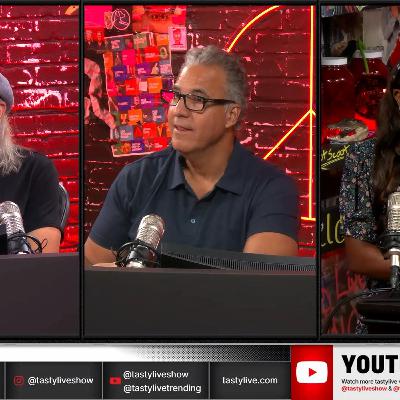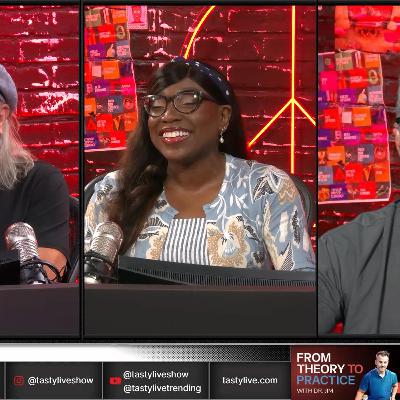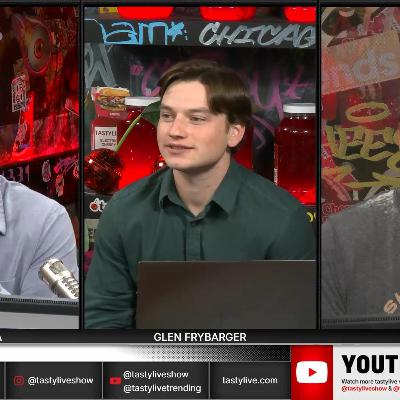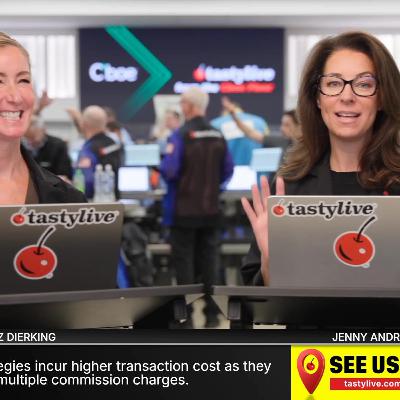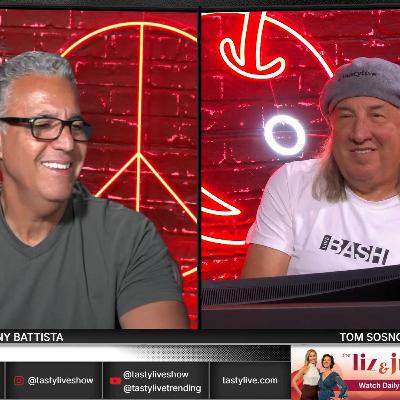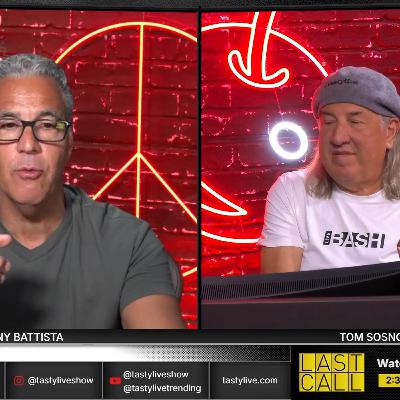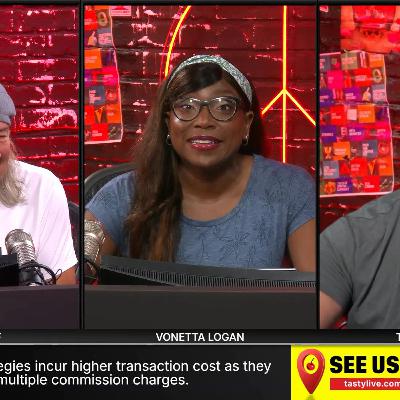Discover tastylive: Daily Dose: Tech & Pop Culture Financial News
tastylive: Daily Dose: Tech & Pop Culture Financial News

tastylive: Daily Dose: Tech & Pop Culture Financial News
Author: tastylive
Subscribed: 7Played: 339Subscribe
Share
© ℗ & © copyright 2013 - 2025 tastylive. All Rights Reserved.
Description
Vonetta is your go to source for the tech, pop culture and meaningless financial news of the day. Whether it's a hot new viral video, life changing app, or a sweet startup you've never heard of, we've got it covered in your Daily Dose of awesome!
2464 Episodes
Reverse
Do stock markets really want a strong US economy? The time to find out may be here if muscular US service sector data eats into Fed interest rate cut expectations. tastylive's Head of Global Macro Ilya Spivak previews August's ISM services PMI data and considers how traders may react if it adds to signs hinting that the US economy is re-accelerating and points the Fed away from the big-splash stimulus that markets have priced in already.
Tom and Dylan discuss recent meetings between leaders of Russia, China, and India, debating whether this alliance poses a legitimate threat to U.S. economic dominance. Dylan expresses concern about potential economic retaliation against the U.S., while Tom remains more skeptical.
The duo examines the upcoming Federal Reserve rate cut, with Sosnoff predicting stocks may react negatively despite the expected reduction. He notes that while short-term rates might be cut, long-term rates could remain flat, potentially signaling ongoing inflation concerns.
They also address the Google-Apple deal and tech monopolies' growing influence. Ratigan argues quantum computing and AI advancements will ultimately benefit society despite concerns about security vulnerabilities, maintaining that technological progress has historically improved lives rather than degraded them.
Market participants anticipate increased rate cut probabilities following weaker-than-expected JOLTS data, with CME FedWatch tool showing 98% likelihood of a September cut. Odds now favor three total cuts by year-end instead of two, driving dollar weakness and bond strength. Gold reached new all-time highs at $3,629, while silver approached $42, both up approximately 1%. Market indices showed mixed performance with the NASDAQ rising 150 points on Google and Apple strength following antitrust case dismissals, while Russell and Dow lagged despite the rate cut narrative. In currency markets, traders focused on dollar-yen movement, which tested 149 before retreating to 148. Australian dollar showed strength against Canadian dollar, approaching range highs dating to March, potentially benefiting from the gold rally. The hosts discussed various earnings trade strategies including disconnected butterflies for Lululemon and call ratio spreads for Salesforce, emphasizing the importance of position sizing and defined risk when trading earnings events.
In Wednesday's market action, S&P 500 futures recovered, trading up 37 points and recouping losses from the previous session. The hosts noted this "cancel crash" pattern, where the market effectively "took back everything it gave away yesterday."
Broadcasting live from the Cboe, Liz Dierking and Jenny Andrews discussed the market's resilience amid ongoing volatility, with charts showing the significant intraday recovery in equities.
Jacob discusses how retail traders shouldn't stress about sophisticated pricing models used by financial institutions. While institutions employ various models (Black-Scholes, stochastic volatility, jump diffusion), the resulting prices all fall within the visible bid-ask spread.
For liquid assets, tight spreads reveal a consensus on fair pricing that retail traders can trust. Experienced traders should focus on liquidity rather than complex mathematical models, with Sosnoff's "star system" providing practical guidance on tradeable assets.
Jacob notes that retail traders may be "outgunned" compared to institutions but have the advantage of selectivity—choosing when to enter markets rather than making them continuously.
Tom and Tony achieve trading perfection with a flawless 10 out of 10 execution while Reddit explodes $16 higher in a massive reversal! Watch Tom's preoccupation with Reddit's $20 swing from yesterday's low to today's surge while systematically working through viewer submissions. The action peaks when they nail precise SPX adjustments and Tom celebrates bond profits from yesterday's 16-tick sale to today's 9-tick buyback.
Witness real money moves on 10 out of 10 diverse tickers - successfully trading TLT (naked puts), QQQ (iron condor), AMD (at-the-money call spread), ETHA (strangle adjustment), CRM (earnings put ratio), SPX (zero-day with live adjustments), GC (gold call spread), 6J (yen puts), C3AI (earnings combo), and NKE (premium selling) in a perfect execution sweep. From bond profits to Reddit reversals, this episode showcases systematic trading perfection under Tom's masterful guidance!
In this segment, Tom and Tony explore multiple strategies for generating income through options trading. The discussion focuses on five key approaches: covered calls (turning 50-50 shots into favorable 2:1 odds), poor man's covered calls (buying long-dated options while selling shorter-term ones), omnidirectional put ratio spreads (buying one put at expected move while selling two further out-of-the-money puts), zebra strategies (synthetic long positions with limited downside), and risk reversals (selling puts to fund call purchases).
Each strategy was presented with practical examples and detailed breakdowns of debit/credit structures, profit mechanisms, risk levels, advantages, and disadvantages. They emphasized how these approaches can improve probability of profit beyond standard 50-50 stock positions while providing greater capital efficiency.
The discussion delves into current market conditions, highlighting movement in major indices such as the E-mini S&P 500 (ES) and the NASDAQ (NQ), driven by gains in Google (GOOGL) and Apple (AAPL). Tom and Tony analyze trading strategies, emphasizing the importance of implied volatility and proper risk management in option trading. They address viewer questions regarding trading metrics, expressing a preference for looking at theta relative to net liquidation instead of buying power usage. The conversation reinforces the relevance of quick decision-making in trading.
The stock market is starting September under fire. Will major US economic data change the game? tastylive's Head of Global Macro Ilya Spivak breaks down market action from stocks to bonds, currencies, and commodities, then previews the incoming US jobs report and ISM service sector PMI data.
Comments
 United States
United States


